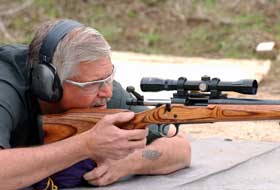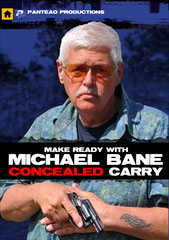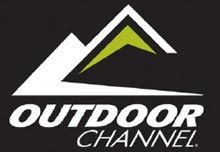• Okay, from today's Things I Didn't Know I Needed That Came In The Mail Anyway file, yesterday I got a "car holster" from a company called Grassburr Leather Works. In short, it's a custom-made leather holster fitted inside a zippered carry pouch, which is fitted on the outside with a brass mouting bracket to attach someplace in your car. Oh hell, go look at the pictures and it will make perfectly good sense!
Screw the dohicky mouting thingie into the console so it's convenient to your right hand; bolt the holster/zipper case to the dohickie; insert gun. Pretty cool, if you ask me. It's going on the Boxcar, my Honda Element, ASAP. You can get a top mount or a side mount, depending on your vehicle. The holster they sent me is for a J-frame S&W, but I'm thinking I must have one for the SIG 226, especially since I still have a partial case remaining of that now-unavailable Israeli black-tipped carbine 9mm, which will penetrate a car windshield or door better than any ammo I ever tested (short of a 12 gauge Brenneke slug!).
Obviously, the mount also works in closets, under your desk, etc. The company makes a natty mounting system for ATVs, too, and some pretty nice looking holsters (I'm going to order one for my many single actions, which always appreciate the occasional new home). Don't even get me started on their custom boots!
• Once again, I'm quoting from a gun magazine, this time HANDGUNS. I used to write for HANDGUNS in the Back-When, before we all started competing in the mysterious world of television; editor Jerry Lee is a good friend (and straight-up guy). He's peopled the magazine with honest-to-goodness authorities you'd recognize from SHOOTING GALLERY (Walt Rauch, Dave Spaulding) and other really good guys (in this issue, single action genuine I-Really-Know-A-Lot-About-This Brian Pearce, blog regular and convivial bon vivant Patrick Sweeney, Mr. Pass Me The Cigar Rick Hacker, Farmer Frank James and and my counterpart from G&A TV, Garry James). Not a single one of HANDGUNS writer staff has either:
1) Called the magazine's readers miserable butt-sucking pond-scum vermin for not buying an endorsed product.Anyhow, Dave Spaulding has some fascinating quotes from Blackwater's Tactical Weekly newsletter (BlackwaterUSA.com — their website is swamped this AM so I can't link), which reprinted a piece from the FBI Law Enforcement Bulletin on the myth of "one shots stops." Here's the link for the original article:
2) Claimed to be the reincarnation of Doc Holliday, Audie Murphy or the entire Princess Gate SAS cast of the movie The Final Option.
3) Viciously and spuriously criticized dead people, who don't seem to be in a position to "answer the charges."
THE MYTHI saw this last night on television, when, in a moment of weakness, I watched the Kim Basinger vehicle Cellular. A bad guy is shot with what looked like a Glock 17 9mm, and he is lifted up offf the ground and hurled into a wall, where ne promptly expires. Darn, I though, I need some of that ammo!
In many of the classic, albeit simplistic, cowboy movies from the early days of the American film industry, the stereotypical “good guys” wore white hats, whereas the “bad guys” donned black ones. After meeting in the middle of a dirt street in some small town, two shots would ring out. The bad guy’s bullet always missed, but the one from the hero in the white hat inevitably found its mark and freed the town of the criminal threat. With one shot from the good guy’s gun, the bad guy immediately dropped to the ground and became completely incapacitated.
In today’s films and television programs, Hollywood has varied not only the clothing of the actors but also their standards and demeanor, both the good guys and the bad guys. It now has become difficult to distinguish the protagonist from the antagonist. Unfortunately, however, this increased realism has not always carried over to the portrayal of gun battles. Many current shooting scenes continue to display unrealistic reactions and underlying expectations regarding ballistic effects. For example, one shot from a handgun often lifts the wounded person 2 feet off the ground and causes immediate incapacitation.
Even knowing that these are movies and television programs, some in the law enforcement community still expect one-shot drops in real-life shootings. In fact, few actual instances end this way.
The short story is that what the authors of the study found was that neither the gun nor the ammo used was a factor in any of the gunfights they studied. Rather, the outcome was the result of the officer's training and attitude.
I bring this up because a commenter pointed out that the 9mm has recently undergone a refurbishing in the gun press. A few years back, the 9mm was regarded as suitable only for tiny back-up guns or rabbit hunting — only the .45 (or a .357 +P+ with depleted uranium) would "guarantee" the nuclear slam-bang one-shot stop. Now many people are coming out of the closet and admitting that they carry 9mm for self-defense without fear of ridicule!
It's about SHOT PLACEMENT! It's always been about shot placement! This from the report's conclusions on firearms training:
Combat courses should necessitate officers shooting until they incapacitate the threat (target) or the threat ceases. This can help prevent, rather than encourage, psychological reinforcement and presumption that the threat will desist after firing a given number of rounds.Thanks for pointing out this report, Dave! Everyone who carries a gun needs to read it.
If lethal force is warranted and appropriate under the circumstances, the officer must shoot until the threat ceases. [my emphasis!] Use of cardboard or paper targets, although economical, inherently forces personnel to perceive bullet impacts on a single plane of reference with out dimension—much different from a human simulation with dimension and placement of organs/skeletal structure of a body.
An occasional mix of training on a three-dimensional target, such as clothed mannequins, preformed targets, and other devices limited only by imagination, may better demonstrate and encourage personnel to exercise critical-thinking skills for delivering optimal shot placement and effective ness. An example is a shooting scenario requiring accurate shot placement on a three-dimensional target at an adverse angle substantially different from the usual 90-degree target placement in many training scenarios due to range design, safety, and economy of training resource time.






No comments:
Post a Comment